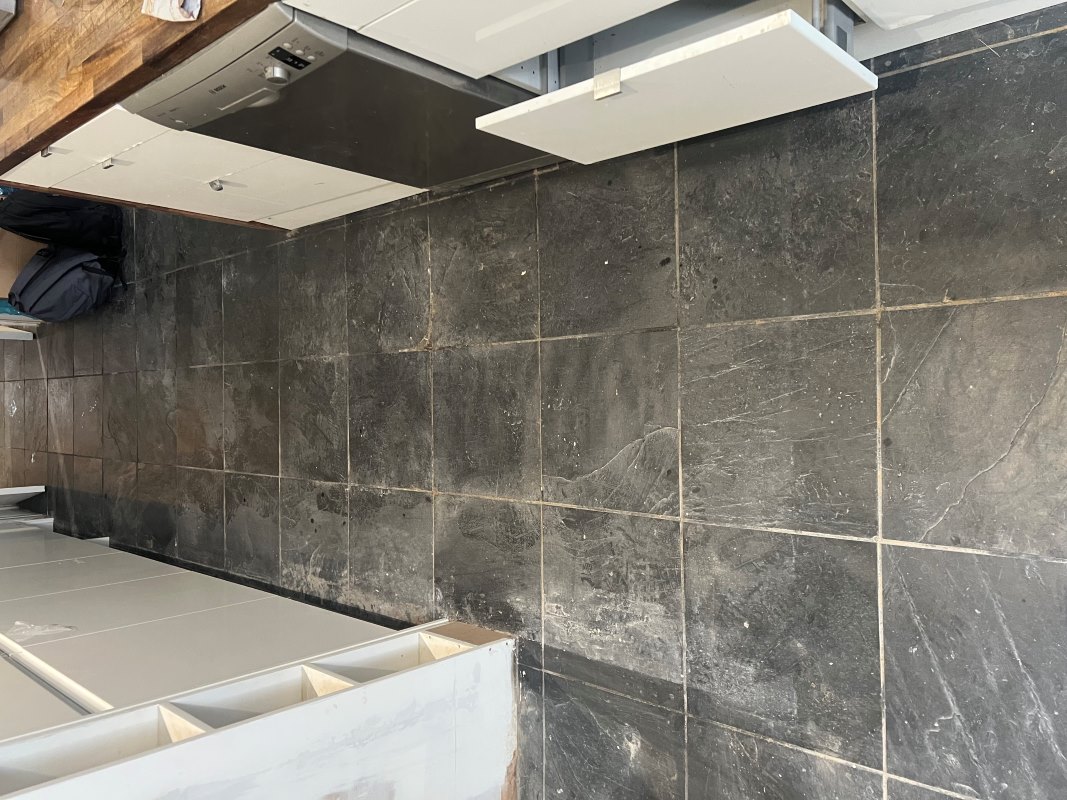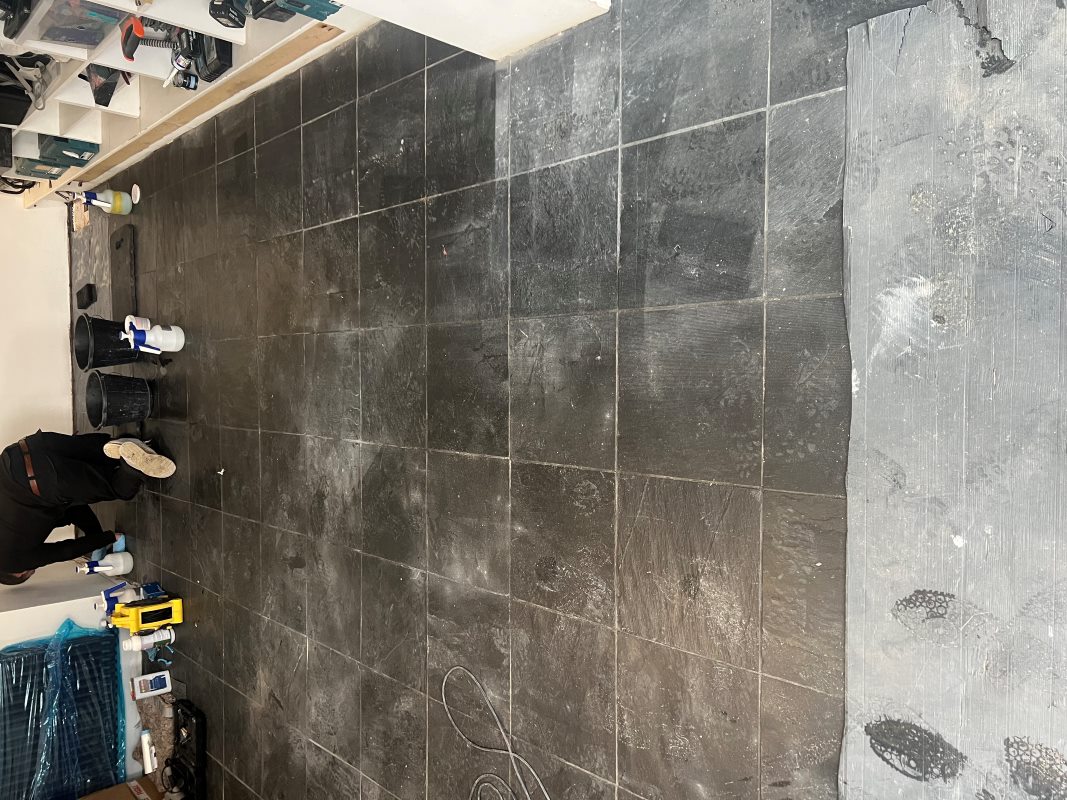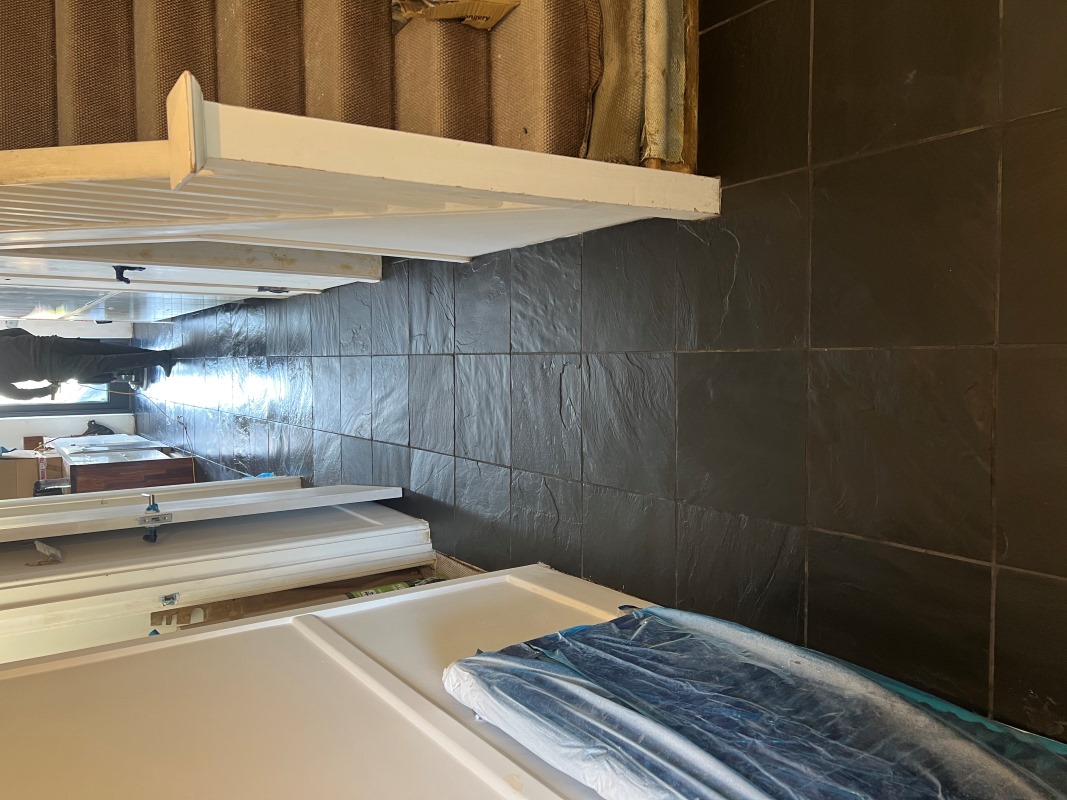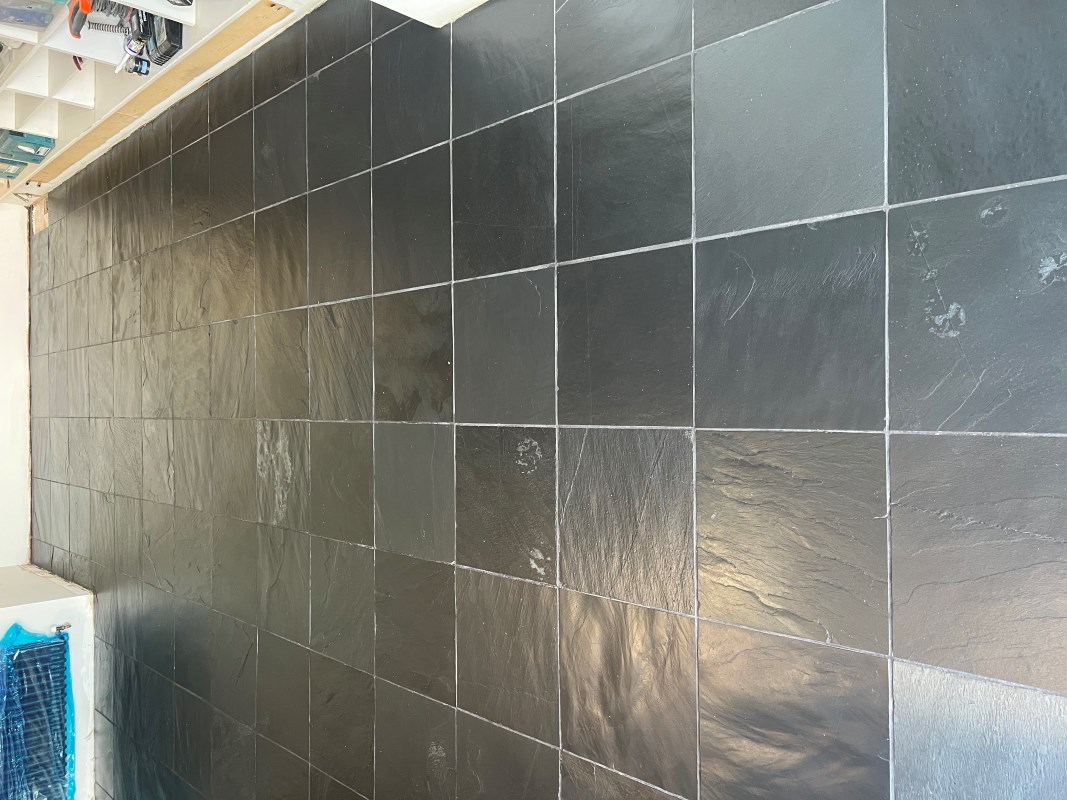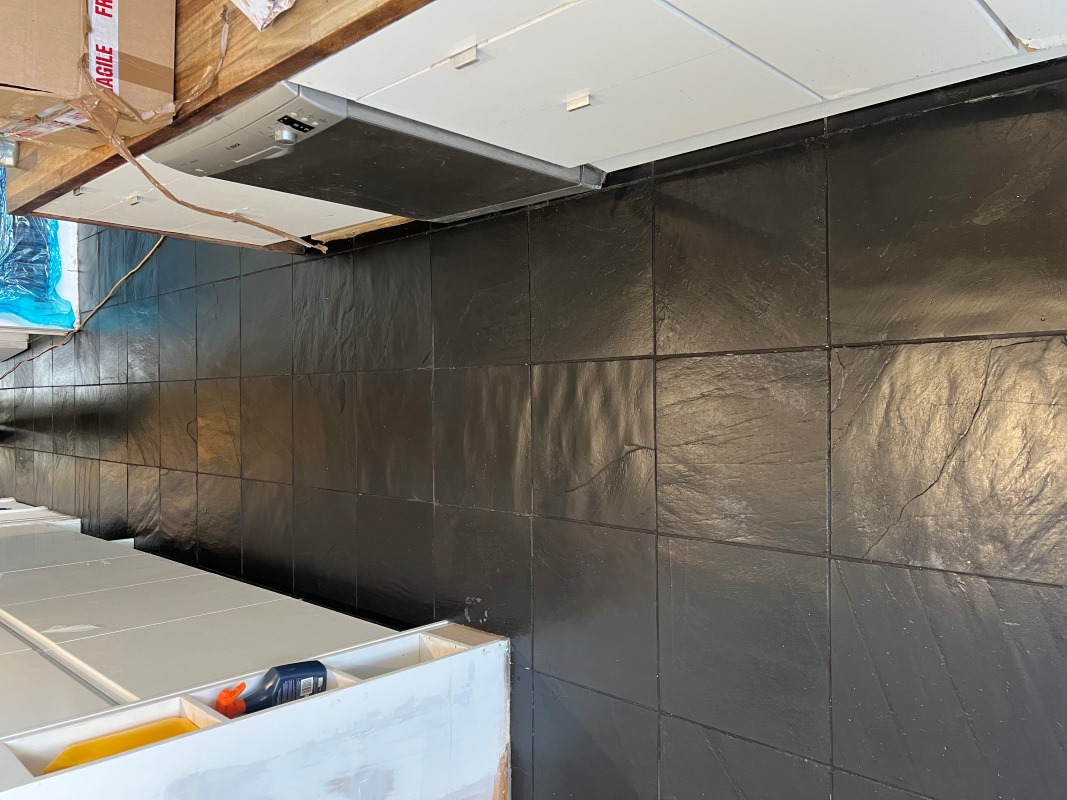Slate is a natural stone that has a beautiful grayish coloring and inherent durability that has made it an incredibly popular design material for all sorts of areas of the home, including floors, countertops, walkways, and even walls. But if you aren't keeping your outdoor slate tile clean, it's not going to look so hot anymore.
Though gorgeous when it's well-maintained, slate looks quite old and dingy when it gets dirty. Keeping your outdoor slate tile clean will be a bit of a chore at times but if you take care of your slate, you will always have stunning outdoor areas that other people notice and admire.
Why Choose Slate?
Outdoor slate tile is used in decks, patios, walkways, outdoor counters, pool surrounds, walls, and other elements found outside and inside the home. Slate is prized because of its looks and its durability.
Slate is a fine-grained stone, which gives it a very nice look and finish. The material is just a little bit rough, which means it is not slippery and less prone to getting slippery than other types of stone.
Slate has pretty natural coloring and it is a very deeply colored stone, which makes it stand out in outdoor environments.
But when slate is in an outdoor atmosphere, it can tend to get dirty quickly. Anything from dirt, dust, food, or pollen can make the outdoor slate look old and dull.
Cleaning outdoor slate tile needs to be done with care. Harsh cleaners can damage nearby plants or even be harmful to animals and it can actually damage your slate, so take on this task with caution.
Using the wrong tools or the wrong cleaning formulas can destroy the look of your slate, so it’s important to know how to keep your outdoor slate tile clean without causing it any harm so it will keep looking beautiful.
When slate is clean, it looks beautiful and it adds a lot of appeal no matter where it’s placed. It's a favorite choice for both outdoor and indoor home areas and the work that goes into keeping slate looking nice is worth the effort, because having slate does add value to property and it's a feature that can be shown off.
Keeping Slate Tile Clean
Keep your slate tile looking nice all the time with regular cleaning. You should do this at least once every couple of months, and more if you notice that the slate looks dirty.
When there's a lot of heavy rain or heavy pollen days outside, you might find yourself cleaning slate more often.
Basic Cleaning
To perform a standard, simple cleaning on slate, sweep or dry mop it first to get rid of grass clippings and other small pieces of debris. Next, add a few drops of standard liquid dish detergent to two cups of water.
Soak a clean cloth in this mixture and apply this directly to the slate. Rub the cloth across the slate in a circular motion to remove dirt and dust and buildup on the stone.
Rinse the slate off with the hose and allow it to air dry. This simple cleaning is standard maintenance that will keep your slate looking nice most of the time.
Performing Deep Cleaning
At least once a year or twice a year, more if your slate tends to get especially grimy, you will need to do some deep cleaning to keep the slate looking beautiful.
First, perform your standard maintenance cleaning. Next, add a little bit of teak oil to a clean, soft cloth.
Apply this to the slate by rubbing it in with gentle circular motions to cover the surface of the slate with the oil. You can use specialized slate oil for this task instead, but teak oil is both more affordable and easier to find and it works amazingly well to keep slate looking fresh and lovely.
You will see a difference right away after rubbing the oil on the stone, as this will bring out the natural sheen and make the color of the slate look even deeper.
The oil also helps to coat the stone with a natural protective barrier against moisture, because oil and water do not mix.
How to Remove Stains
Life happens and even durable stone is not immune to the dangers of the world. In other words, stains happen.
If you notice staining or discoloration on your slate, mix equal amounts of hydrogen peroxide and water in a spray bottle. Spray this solution directly on any stains on the slate.
Let the mixture sit for 10 minutes and then gently, use a soft scrub pad or sponge directly on the stain. Do not use steel wool or a stiff-bristled scrub brush, because these abrasive cleaning tools could damage your stone.
If your slate is tile and grout, be extra cautious so as not to get the hydrogen peroxide on the grout. The solution could end up discoloring your grout, which you don't want.
Facing a tougher stain? When hydrogen peroxide isn't doing the trick with water, add some of it to baking soda.
Mix the baking soda and hydrogen peroxide together until you get a paste-like consistency and slather this directly onto the stain in a nice, thick coat. Let it sit there for about 10 minutes and then wipe it away.
Hopefully, the stain will wipe away right along with the baking soda. Clean the area with plain water and a clean cloth.
Seal It
Keep slate looking beautiful and make it much easier to clean by applying clear stone sealant once a year. You will basically paint this on with a brush, though you have to work slowly and make sure you get to all the various contours of the stone.
You want a nice, even coat that covers every part of the slate.
The sealant will protect the slate from wear and tear. Though slate is a tough natural stone, it is certainly not impervious to weather and moisture.
After all, water can carve through any rock when it wants to. Slate is particularly sensitive to acid rain, so it's essential to apply sealant regularly to slate that is outside.
Repairing Slate
Though slate is strong, it can be scratched. You shouldn't drag furniture or other items across slate because this will cause scratches.
If your slate scratches, you can apply mineral oil to the spot. This can repair little scratches in stone fairly easily and it restores the natural sheen of the slate.
Put a little of the mineral oil on a clean cloth and gently rub it into the scratch in small, circular motions.
If you have a chip in slate, get an epoxy filler. You will need to find one in the same color as the slate, so you may have to use a little trial and error to find just the right shade.
Test the epoxy filler somewhere else first to get a good sense of its color before you apply it to your slate. Fill the chip with the epoxy and smooth it over with a small putty knife.
Let the epoxy dry completely before you walk on the tile. After the epoxy dries and settles, you may need to apply a second coat of the epoxy and repeat the drying process to get everything looking just right.
Slate Tile Tips
Keep some things in mind around your slate to keep your slate in beautiful condition. If you stick to a few guidelines for cleaning slate, you will keep it clean without doing any damage to the material.
Don't use stiff or metal cleaning tools on slate. Tools like this can scratch the material and damage the look of slate.
When cleaning slate, use a microfiber or a cotton cloth. Avoid using bristles on slate, unless they are very soft.
Mop tile with water and just a little mild liquid detergent, but don't use a soaking wet mop. Too much water will create little water spots that will make the slate look dirty again.
Always and only use cleaners with a neutral or negative pH. You do not want to use anything acidic on slate ever because it will cause damage to the stone, weakening it and even scratching the surface of the material.
Keep Your Outdoor Slate Tile Clean
Slate is a beautiful stone but it does require maintenance. Get into the habit of maintaining the stone regularly, and you won't have to spend a lot of time cleaning the slate and it will look beautiful for you much longer.
Regular cleaning with the right solvent and tools, regular coats of sealants, and normal maintenance will keep slate looking clean and beautiful.
Outdoor Slate Tile FAQ
Do outdoor slate tiles need to be sealed?
Slate tiles should be sealed once a year. This will not only give them a much nicer finish, but it will protect the stone from weather and stains, which will make it much easier for you to clean and maintain.
Use slate sealer specifically. Don’t use another type of sealant and definitely do not use wax, which will make slate very slick and dull the natural look of the stone.
Is slate tile suitable for outdoor use?
Slate is highly durable and does not damage easily, so it is used often for outdoor patios, walkways, counters, and so on. This is a popular outdoor stone and highly versatile, so it can be used for many things and looks good in many different ways.
Is slate tile high maintenance?
Compared to other popular outdoor building material options, such as granite and concrete, slate is relatively high-maintenance. Compared to outdoor materials not classified as stone, however, such as natural wood, slate is not so high-maintenance after all.
Slate does not need to be re-stained and will not rot away or suffer from insect or bird damage. It won't fade in color over time and, with the exception of catastrophic weather events, it will stay where you place it.
You do have to be mindful of slate and take special care of it, sometimes use special formulas like teak oil, but this is a long-lasting stone that looks beautiful and adds a touch of a high-end look to any outdoor area.
What should you not use on slate?
Vinegar is a common household cleaner that is used as an all-purpose solution, and it can remove dirt and stains from many materials. It can even remove sticky residue and glue from items that you don't want covered in glue.
However, you should never use vinegar or any acidic cleaners on slate. It’s important to keep this in mind at all times, especially if you're in the habit of reaching for the vinegar cleaner for everything.
Vinegar can damage slate, creating little scratches that destroy the finish and look of the slate. Avoid all acids, including citrus, when you're cleaning slate, because they can all weaken and damage the stone in this way.
In addition, acidic cleaners can react with the natural calcium in the stone and may cause a dulling or even whitening of the stone. The slate will develop a chalky look that is not appealing.
Stick to neutral and oil-based cleaners instead. You can even use WD-40 to clean slate.
If you’re unsure about what to use on stone, simply use mild soap and water. This has a neutral pH and it’s perfectly safe for your slate.
How do you keep slate tiles shiny?
Give slate a glossy look with a high-sheen clear stone sealant. You will apply sealant at least once a year as part of standard slate maintenance, so choose a glossy sealant and your slate will shine.
Keep the slate clean and treat it with oil after every deep cleaning. This will also help keep the stone looking glossy and fresh.
Source: www.DoItYourself.com
